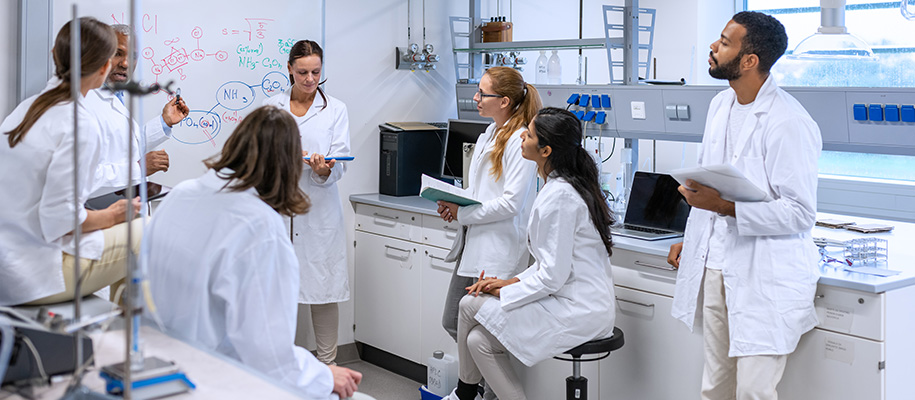College campuses provide students with access to many types of science labs and special equipment for research purposes. If you’re an aspiring STEM major, it’s likely you will have the opportunity to work with lab equipment at least once during your undergraduate years. These hands-on experiences are very important in advancing your understanding of your field. Here’s an overview of the kinds of equipment you might come across in the lab for three popular STEM majors.
Life Science labs
As a Life Sciences student—which includes a broad range of majors such as Neuroscience and Biology—chances are you will get to work with the following key pieces of lab equipment in college:
- Microscopes: These help you analyze small particles, such as cells, of many things in the biological world. In a Neuroscience lab specifically, you’ll likely see slides with very, very thin machine-cut slices of a brain. Putting these slides under the microscope will allow you to look at the cell makeup of the brain and better understand the focus of your discipline.
- Centrifuge: A centrifuge is a very important component of many STEM labs because, with the help of their centrifugal force, researchers can separate liquids of different densities or solids from liquids. They take into account viscosity, density, and the size of particles. While this is an extremely useful tool for Life Science, it’s very important to understand how a centrifuge is supposed to be used because it can pose hazards.
Related: An Inside Look at College Labs: What STEM Classes Are Really Like
Computer Science labs
As a Computer Science major, you’ll use high-quality standard computers as well as highly specialized equipment in your labs, such as:
- Supercomputers: These high-tech machines help make predictions using advanced modeling and simulations, among a variety of other advanced uses. The information they produce can be applied to many STEM disciplines and career fields, such as climate research and weather forecasting.
- GPU clusters: GPU stands for Graphic Processing Unit, and a cluster of these means there is a group of computers with a GPU on each node. Having several of these allows college campuses to accelerate computing power to process and store images, videos, and many useful applications for research. These can even be helpful in a Life Science lab dealing with computation.
Engineering labs
Engineering majors can expect to see some more unique and hard-to-come-by equipment that will allow them to conduct hands-on experiments throughout their studies, including:
- 3D printers: It makes a lot of sense to have 3D printers in an Engineering lab because they’re pretty fast and can provide a quick prototype for whatever it is you are trying to make and test during your lab hours. You’re likely to find these in a Mechanical Engineering lab, but that’s certainly not the only place.
- Oscilloscopes and signal generators: Signal generators produce alternating currents and voltages, and they act as batteries for oscilloscopes, which are used for measuring alternating voltages, nearly the same as voltmeters. This can be useful when testing circuits that you’ve built or are studying in the classroom.
Related: What Kind of Engineering Do You Want to Major In?
Overall, the tactical experience gained in a lab is valuable to your college experience since it not only builds on understanding but also gives you the opportunity to improve your research skills. Understanding how to use STEM equipment safely and the correct personal protective equipment (PPE) is extremely important because it can often pose a health risk. However, when used properly and carefully, it is a safe, enjoyable, and exciting experience. And don’t worry—your professors will walk you through everything when you get there!
Haven’t found a college to pursue your STEM dreams yet? Explore the amazing schools on our featured science college lists.






